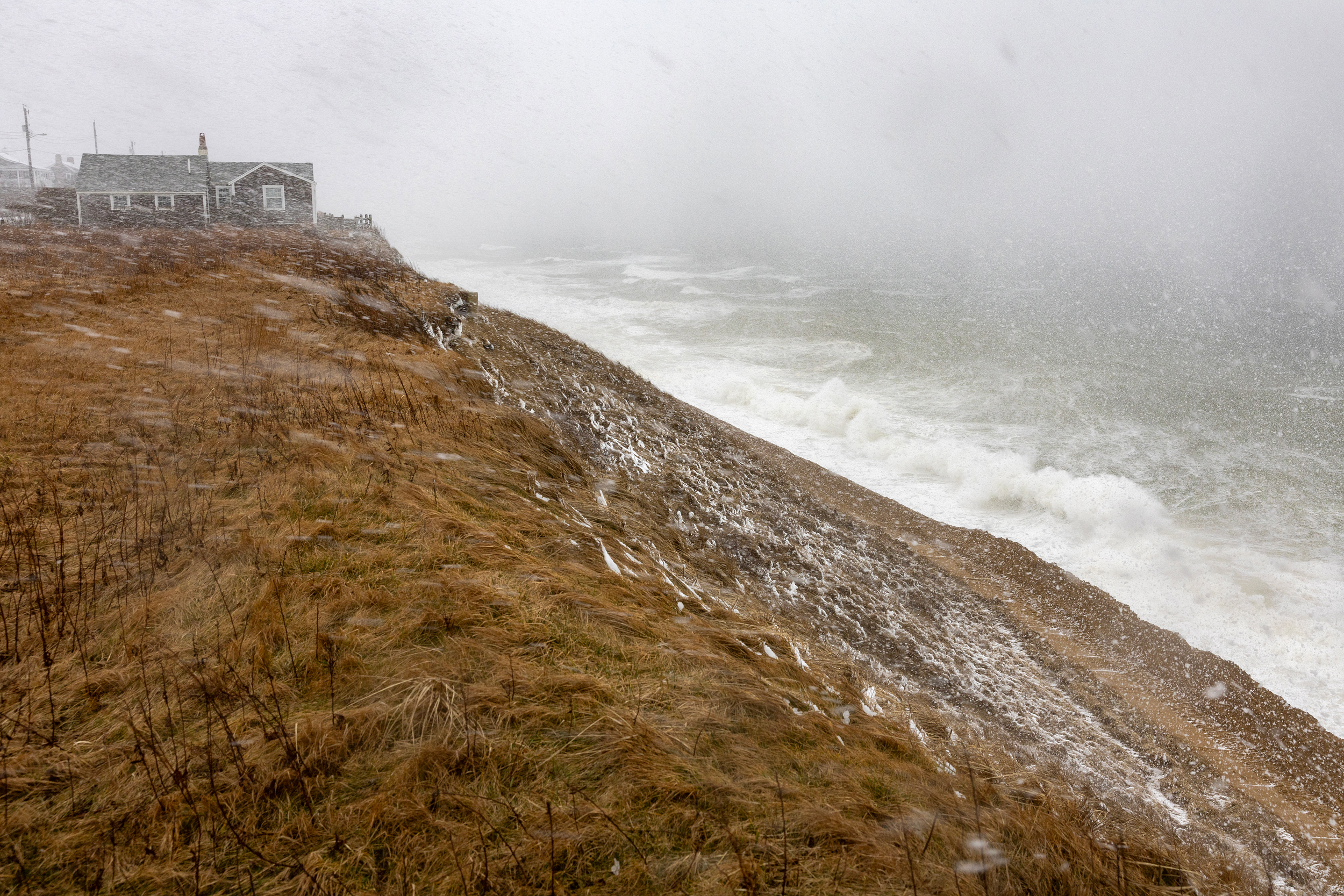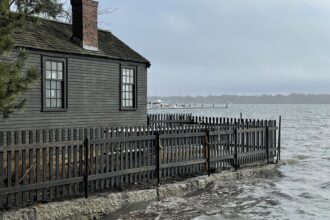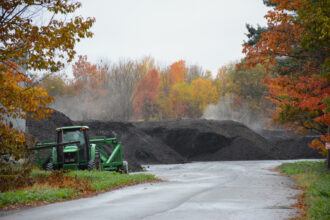A long-awaited advisory plan to protect Massachusetts’ 1,519 miles of coastline from intensifying storms and sea level rise—an effort years in the making as tides creep higher into coastal neighborhoods from Salisbury to Cape Cod—has been released by state agencies.
Building on 2023 climate adaptation plans, which identified coastal adaptation as a top priority, the new ResilientCoasts Initiative lays out how the state aims to safeguard vulnerable shorelines, infrastructure and communities. The Massachusetts Office of Coastal Zone Management under the Executive Office of Energy and Environmental Affairs (EEA) has led the effort.
The 144-page plan, which is a non-binding advisory document, details ways to improve flood resilience, restore natural buffers and guide future development. Advocates welcomed the plan but emphasized that follow-through and funding—the overall effort will cost billions of dollars—will determine its success.
The plan will now be reviewed by state lawmakers and local officials to determine how to turn its recommendations into practice.
The stakes are clear. According to years of research on Massachusetts’ coastal vulnerabilities, climate change will put millions of residents in harm’s way, threaten shoreline economies, and strain aging infrastructure.
“We heard directly from residents, scientists, and local officials across our coast, and their input shaped every part of this plan,” Coastal Zone Management Director Alison Brizius said in a statement. “People see what’s happening–the flooding, the erosion, the stronger storms–and they want action.”
Sea level rise, storm surge and erosion are poised to impact some 3 million Massachusetts residents by the end of the century, according to the report. While the initiative’s priority is to “improve human health and safety,” the Executive Office of Energy and Environmental Affairs and advocates see adaptation planning as a cost-saving mechanism.
Projections from the Massachusetts Office of Coastal Zone Management estimate that sea levels could rise by up to six feet by 2100, costing coastal municipalities roughly $946 million per year in damages. Meanwhile, intensifying storms fueled by a warming ocean and atmosphere—warmer air holds more water vapor, producing heavier rainfall—could push annual storm-related losses to nearly $1 billion on average.
“Every dollar we invest now will help us avoid a cycle of damage and rebuilding,” said Deanna Moran, chief coastal resilience officer at the Office for Coastal Zone Management. “The cost of these projects are only going to rise.”
A U.S. Chamber of Commerce report in 2024 found that each dollar spent on climate resilience saves communities about $13 “in damages, cleanup costs and economic impact.” The ReslientCoasts Initiative recommends that Massachusetts legislators focus, in the near-term, on protections for key cities, including Boston, Quincy and Lynn. The plan also points to critical coastal ecosystems including barrier beaches, salt marshes and floodplains that need to be preserved to buffer future storms.
Broadening those priorities into tangible protections is the challenge, officials have said.
The plan outlines a range of strategies, from reinforcing seawalls and modernizing building codes to encouraging smarter coastal development, including amending zoning and building codes to account for sea level rise and flood risk. Climate advocates praised adaptation methods that harness nature to reduce disaster risk, including seeding vegetated berms, restoring dunes to keep floodwaters at bay and creating wildlife habitat that, in some cases, help to capture carbon.
The plan’s most striking proposal is a voluntary buyback program that would allow homeowners in high-risk flood zones to sell their properties to the state, creating space for natural shoreline restoration.
Ali Hiple, Senior Policy Analyst at the Conservation Law Foundation, said the voluntary buyback is a great idea but “right now, the initiative is just a plan.”
“It needs to come with money, action and political will,” Hiple said.
Implementation of the ResilientCoasts Initiative will require significant investment. A recently released report, “ResilientMass Finance Strategy,” led by the EEA, found that between $7 billion to $15 billion in public and private investment would be needed by 2050 to protect Mass coastlines and wetlands.
At the federal level, the Federal Emergency Management Agency has sharply curtailed key resilience-grant programs. The Trump administration’s cuts have put an already limited pool of coastal resilience funding under strain, state authorities said.
“We are not in a position to make up for all lost federal funds,” Moran said. “The cuts we’ve seen have been devastating and baffling given we continue to see extreme weather events.”
Over the past two decades, Massachusetts has invested about $200 million in coastal resilience. The new ResilientCoasts Initiative also calls for expanding public–private partnerships to help fund shoreline protection and adaptation projects.
“A lot of this stuff is in motion, it’s time for the state to step up and cross the finish line,” Hiple said. “The best time for climate action was a long time ago, but the second best time is now.”
About This Story
Perhaps you noticed: This story, like all the news we publish, is free to read. That’s because Inside Climate News is a 501c3 nonprofit organization. We do not charge a subscription fee, lock our news behind a paywall, or clutter our website with ads. We make our news on climate and the environment freely available to you and anyone who wants it.
That’s not all. We also share our news for free with scores of other media organizations around the country. Many of them can’t afford to do environmental journalism of their own. We’ve built bureaus from coast to coast to report local stories, collaborate with local newsrooms and co-publish articles so that this vital work is shared as widely as possible.
Two of us launched ICN in 2007. Six years later we earned a Pulitzer Prize for National Reporting, and now we run the oldest and largest dedicated climate newsroom in the nation. We tell the story in all its complexity. We hold polluters accountable. We expose environmental injustice. We debunk misinformation. We scrutinize solutions and inspire action.
Donations from readers like you fund every aspect of what we do. If you don’t already, will you support our ongoing work, our reporting on the biggest crisis facing our planet, and help us reach even more readers in more places?
Please take a moment to make a tax-deductible donation. Every one of them makes a difference.
Thank you,













